2024 Printable Military Time Chart: The military time format divides the day into 24 hours, starting from midnight and ending at the next midnight. Unlike the 12-hour clock system, military time doesn’t use AM (ante meridiem) or PM (post meridiem) to differentiate between morning and afternoon. Instead, it simply counts the hours from 00 to 23.
military time is a 24-hour clock system that simplifies time notation, eliminates ambiguity, and is widely used for its clarity and precision.
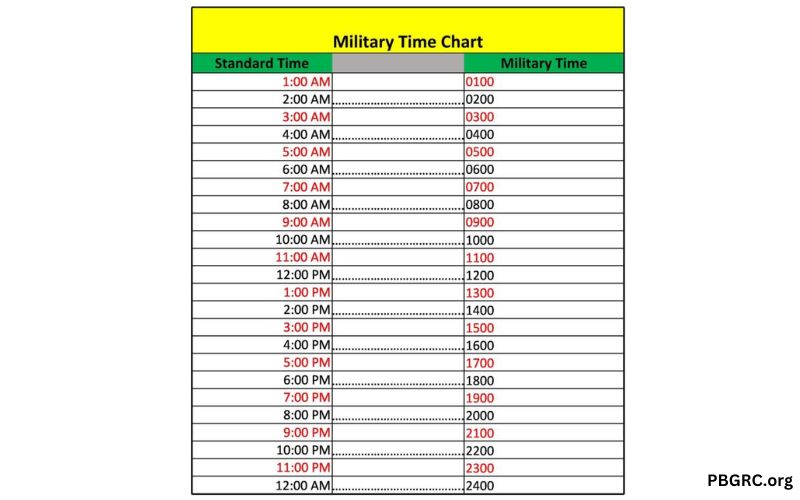
Free Printable Military Time Chart Templates 2024
Once you get the hang of it, reading military time becomes second nature, and it’s a valuable skill to have, especially in contexts where accuracy is vital.
Military time, a system initially popularized during World War I, brings three distinctive features to the table. Military time eliminates the need for distinguishing between AM and PM, eradicating time-related confusion.
Unlike the standard 12-hour clock, which repeats numbers from 1 to 12, military time presents an uninterrupted sequence from 00 to 24. Discover our extensive assortment of free lesson plan templates for 2024, created to simplify your teaching approach and improve student learning.
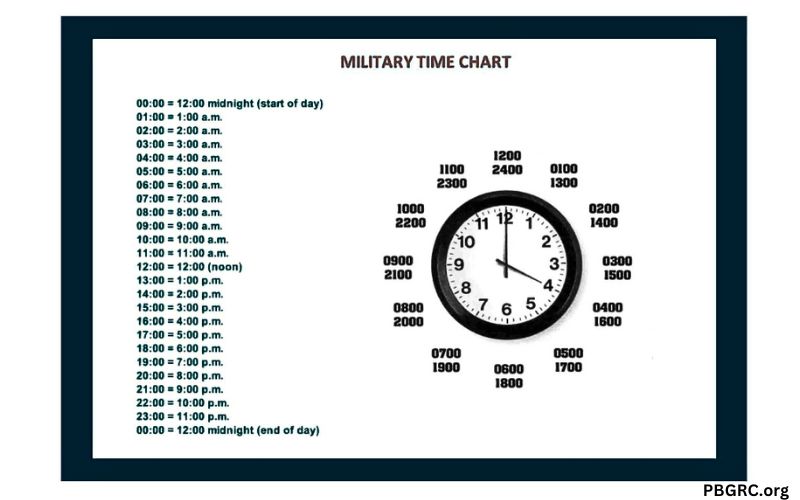
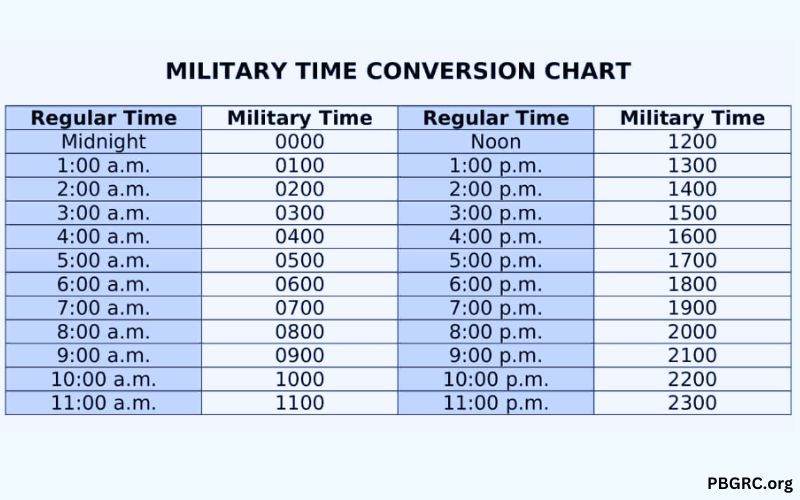
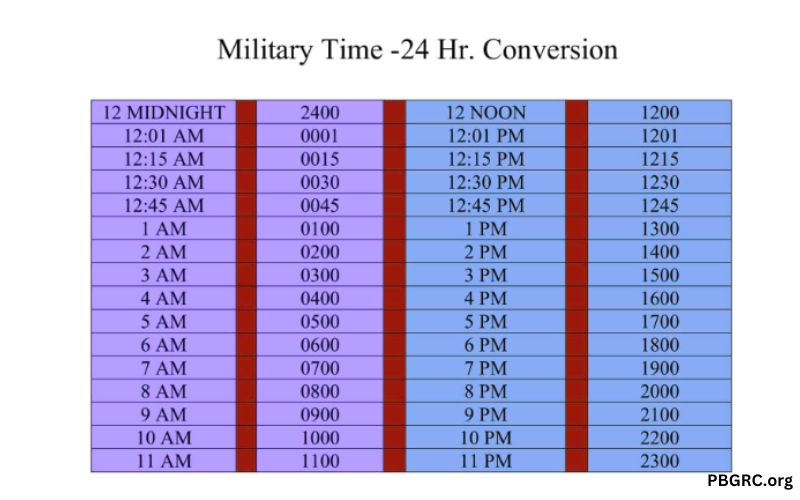
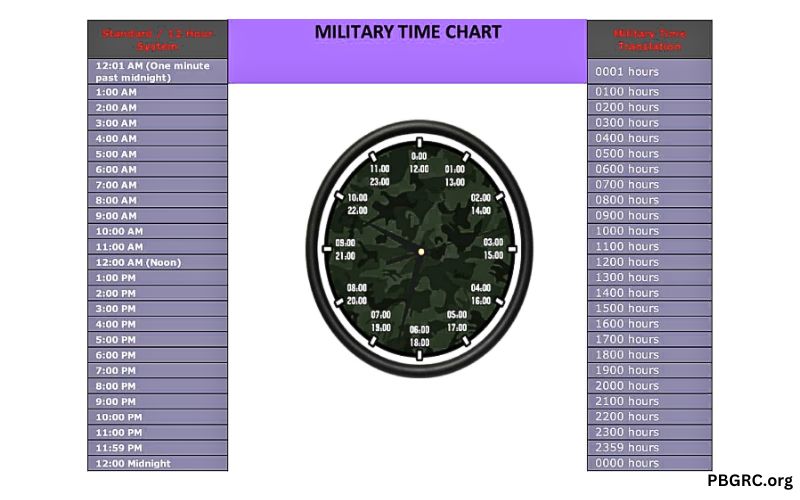
Military Time Conversion Chart Template
The Military Time Conversion Chart is your trusted companion for swift conversions between standard and military time. It’s a straightforward chart with two columns
This column displays hours in the familiar 12-hour format and denotes morning or evening. In the second column, you’ll find hours in military time, providing an instant reference for conversion.
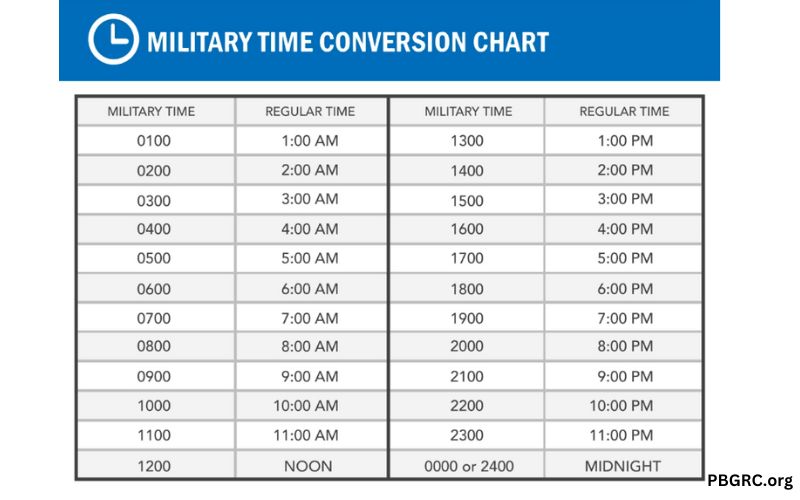
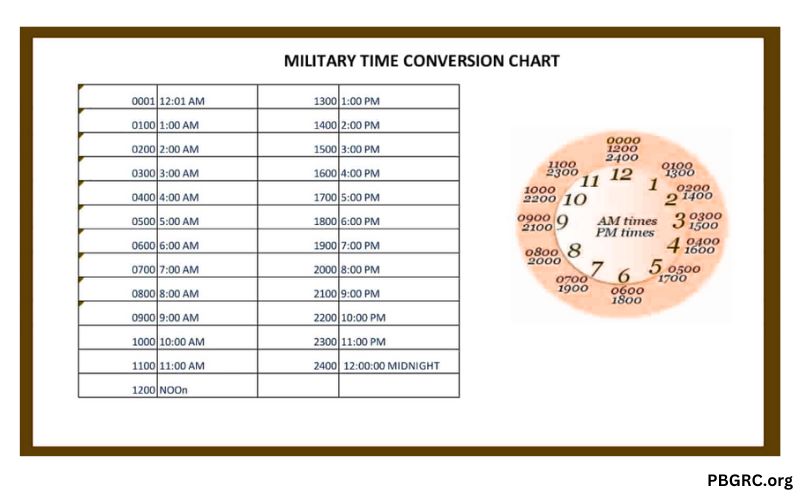
Military Time Conversion Chart
In military time, you won’t find the familiar colon (“:”) used in the 12-hour clock format. The hours and minutes are written as one continuous four-digit number. For example, 2:30 PM in military time becomes 1430.
Midnight is represented as 0000 or 2400. Both notations signify the beginning of a new day. For morning hours from 1:00 AM to 9:59 AM, simply add a leading zero to the hour. For example, 7:15 AM becomes 0715.
Afternoon hours from 12:00 PM to 11:59 PM are simply represented as they are. For instance, 6:45 PM is 1845 in military time. The beauty of military time is that it’s straightforward. Noon is 1200, and midnight is either 0000 or 2400, depending on the preference.
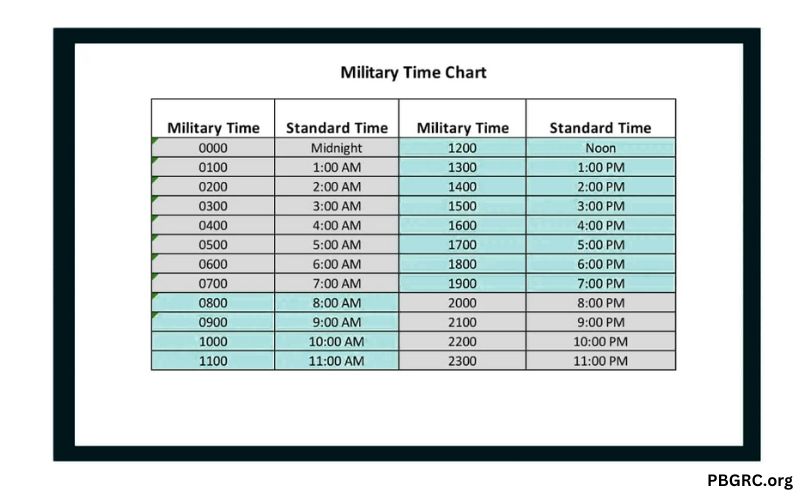
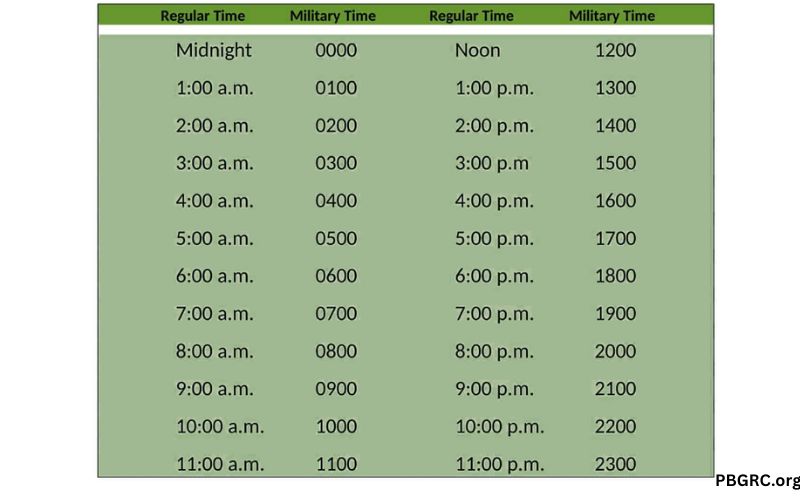
The Significance of 24-Hour Time
The adoption of the 24-hour time format serves a vital purpose in eliminating ambiguity and enhancing precise time communication. It’s especially valuable for international scheduling, travel, and critical operations. With hours numbered from 0 to 23, there’s no room for confusion between morning and evening hours, as seen in the 12-hour clock.
Advantages of Military Time
- Clarity: Using military time simplifies time comprehension by removing the ambiguity of AM and PM.
- Consistency: It provides a universal timekeeping system used across the globe, making it ideal for international communication.
- Precision: It’s especially useful in military and aviation operations, where precise timing is crucial.
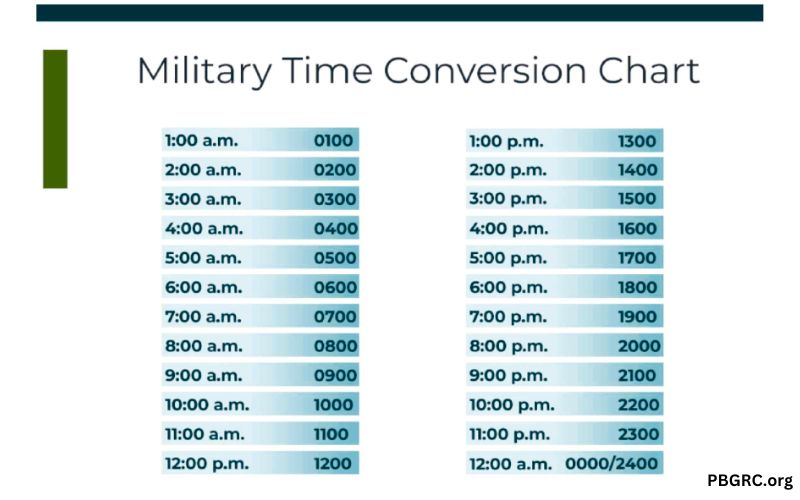
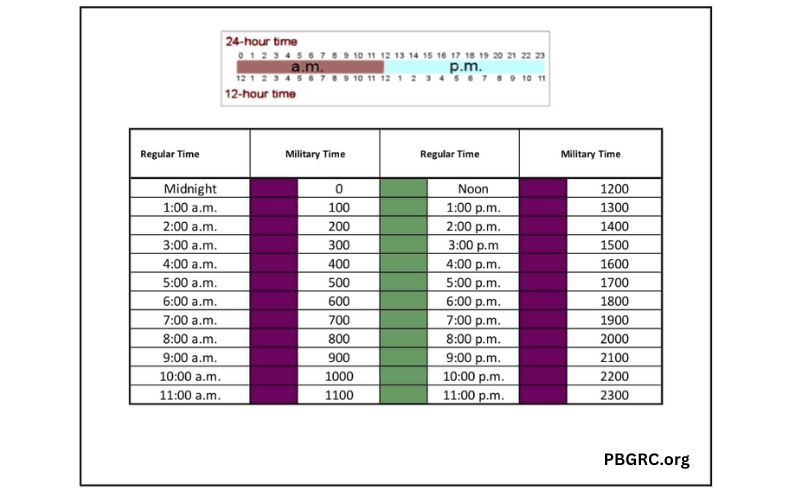
Leveraging Time Series Charts
Time series charts aren’t just for data enthusiasts; they are essential tools for gathering and presenting information about changing data over extended periods. For example, these charts can be invaluable for tracking daily temperature fluctuations or any other recurring patterns.
Additionally, Time Conversion charts provide accuracy in converting specific data, helping you keep up with trends and ensure accurate time representation.
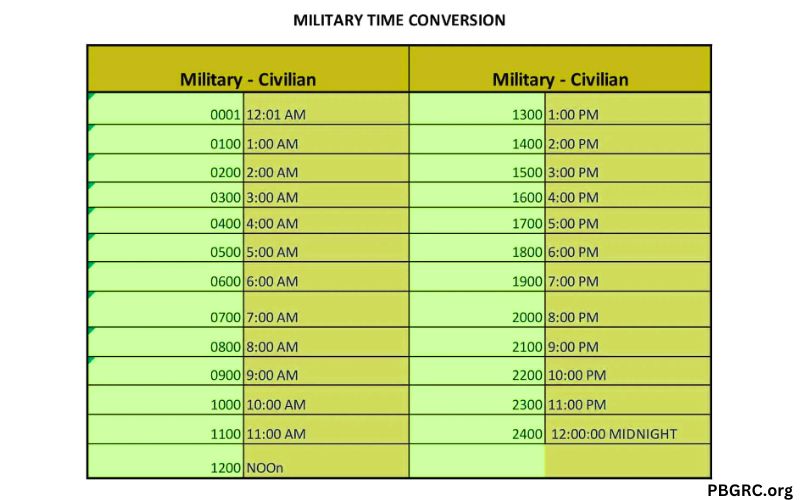
Conclusion
The Military Time Chart is a helpful tool for converting between Military Time and Standard Time. This article offers guidance on its effective usage. Moreover, downloadable versions of the charts are accessible.
